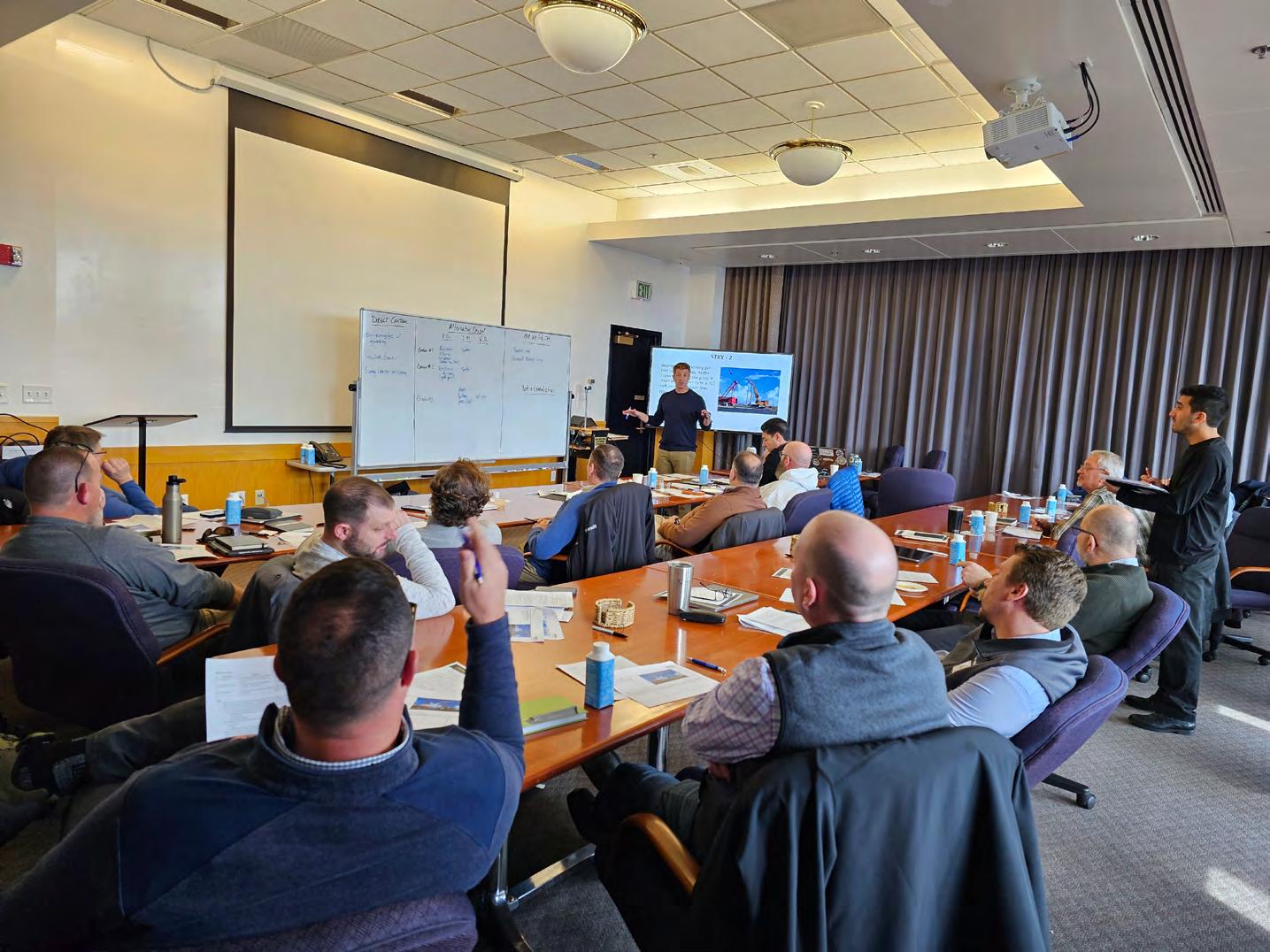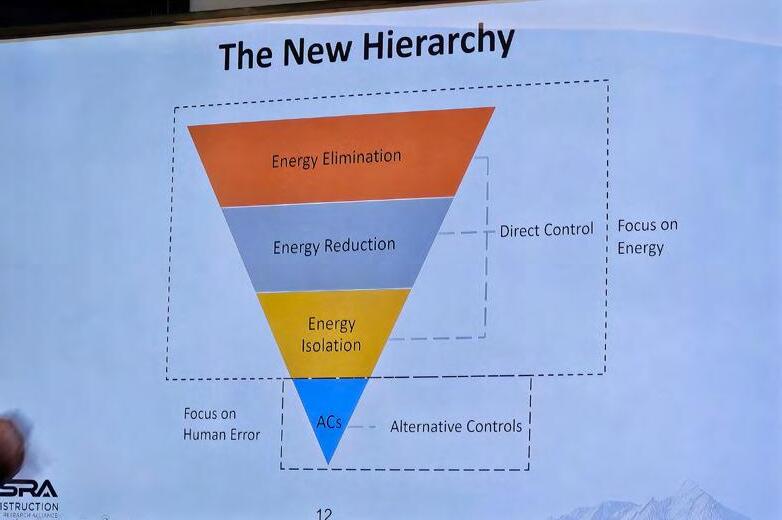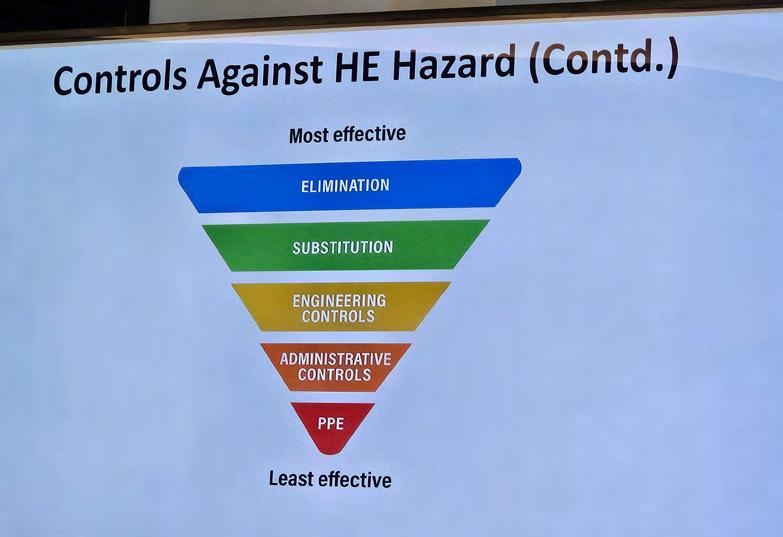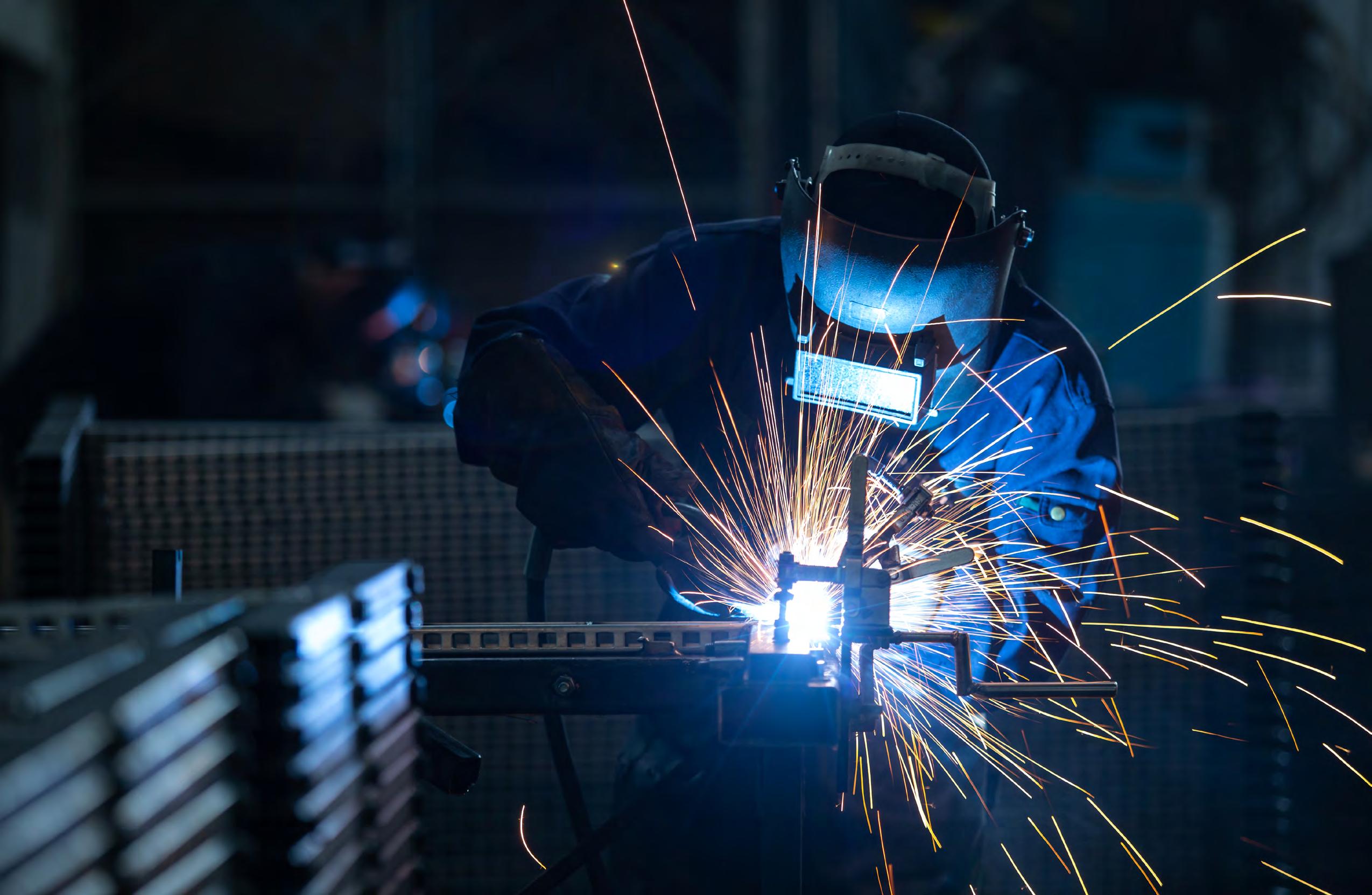THE SAFETY NET
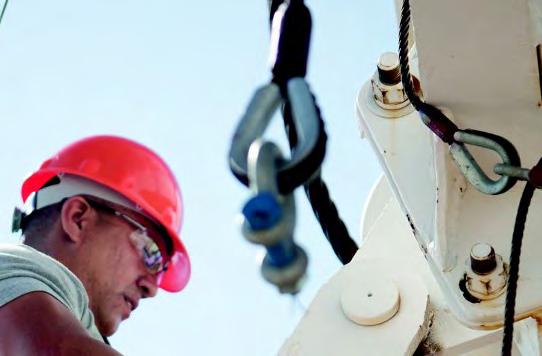
Ladder Safety Tips
Did you know that more than 22,000 people across the U.S. are injured while using ladders each year? And, unfortunately, 161 people suffered a fatal injury from a ladder in 2020. According to the U.S. Bureau of Labor Statistics, approximately 65% of those ladder fatalities came from movable ladders. 1
Falls make the top three list of most common disabling workplace injuries.2 While the number of ladder-related deaths has declined slightly in recent years, decreasing by 12% from 2016 to 2020,3 even a single injury or death from a ladder fall is one too many.
That’s why, since 2017, the U.S. has observed National Ladder Safety Month in March. Ladder Safety Month aims to raise awareness about the various components of ladder safety and outline best practices we all can use to decrease ladder injuries, falls and deaths.
WHO IS MOST AT RISK OF LADDER INJURY?
U.S. workers in several industries had the most reported workplace injuries from ladders in 20204 that required them to take days off work. These include:
• Construction & Extraction (5,370 injuries)
• Installation, Maintenance & Repair (5,790 injuries)
• Transportation & Material Moving (1,670 injuries)
• Farming, Fishing & Forestry (660 injuries)
These injuries come at a cost – not only for workers and their health but also for employers. A 2018 workplace safety survey in the U.S. found that $17+ billion is spent on falls that result from working at height.5
HELPFUL TIPS TO STAY SAFE WHEN WORKING ON A LADDER
While people might think they know how to climb and work on a ladder safely, they may not be in compliance with ladder safety guidance. In the U.S. Occupational Safety and Health Administration (OSHA)’s fiscal year 2021 list of most frequently cited violations across industries, “Ladders, Construction” (29 CFR 1926.1053) came in at number three.6 For example, OSHA’s guidance mandates that fall protection be provided for workers climbing or working on fixed ladders higher than 24 feet.7
The following tips from OSHA and the Canadian Centre for Occupational Health and Safety (CCOHS) can help workers and employers lower their risk of ladder injuries and comply with safety guidelines.8
BEFORE YOU CLIMB:
• Read ladder labels.
• Check the ladder’s feet and the surface where the ladder is placed. Only use a ladder on a stable and level surface, unless it has been secured. Do not place a ladder on unstable bases to gain height.
INSPECT THE LADDER:
1. If you see damage, remove the ladder from service and tag it until it can be repaired or discarded.
2. Ensure the appropriate accessories are there (such as ladder levelers, jacks or hooks) and use them only for their designed purposes.
3. Check for slippery material on the rungs.
4. Ensure locks on an extension ladder are engaged.
Look at your surroundings: Make sure there are no overhead power lines nearby. If so, avoid using a metal ladder near them or any energized electrical equipment.
Footwear: Make sure your footwear is in good condition and free of mud, water, ice or grease. Wearing footwear with heels can help prevent your foot from slipping forward.9
SETTING UP:
1. Positioning: Place the ladder base at the correct angle—a quarter of the working length of the ladder from the wall.
2. When accessing an elevated surface using an extension or straight ladder, it must extend at least 3 feet above the point of support.
3. Secure ladders that are placed in any location where they can be displaced by other work activities (or erect a barricade to keep traffic far enough away from the ladder).
WHILE CLIMBING AND USING THE LADDER:
• Check the weight : Do not exceed the ladder’s maximum load rating. Consider both the weight of the person it is supporting and the weight of any tools or equipment.
• Maintain three points of contact on the ladder - Two hands and one foot, or two feet and one hand.
• Always face the ladder while climbing up or down.
• Do not use the top rung as a step unless it was designed for that purpose. You have climbed too high if your knees are above the top of the ladder.
• Do not move or shift a ladder while it is in use.
• Never slide or jump down from a ladder. Additional tips and ladder safety resources can be found at the National Ladder Safety Month 2023 website, including one-page flyers, videos and ladder safety training.
HOW HONEYWELL HELPS WITH LADDER SAFETY
Honeywell is committed to worker safety, and we provide a number of fall protection and footwear solutions to help workers on ladders remain safe. Contact us to learn more.
Sources: 1, 3, 4- bls.gov , 2 and 5- laddersafetymonth.com , 6 and 7-osha.gov , 8- oshaeducationcenter.com , 9- ccohs.ca , Additional information from Weeklysafety.com
American Ladder Institute (ALI) has declared March as National Ladder Safety Month . This movement is dedicated to ladder safety awareness in an effort to decrease the number of ladder-related injuries and fatalities.
The American Ladder Institute (ALI) is a not-for-profit association dedicated to promoting safe ladder use. The ALI is comprised of members from the US and Canada who are ladder manufacturers and manufacturers of ladder components. ALI is the American National Standards Institute (ANSI) approved developer of ladder safety standards.
Every year, over 100 people die in ladder-related accidents, and thousands more suffer disabling injuries. Mark your calendar to join the American Ladder Institute (ALI) in observing National Ladder Safety Month , designed to raise awareness of ladder safety and to decrease the number of ladder-related injuries and fatalities.
Every step matters: From step stools to extension ladders, make sure you’re putting the right foot forward.
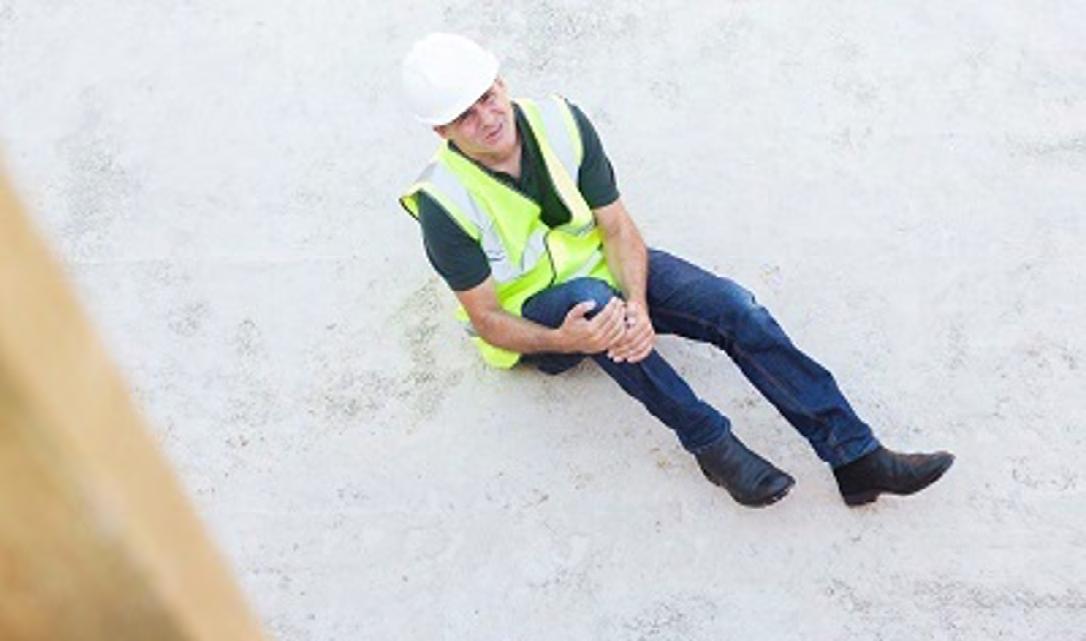
NATIONAL LADDER SAFETY MONTH IN MARCH 2024 WILL FOCUS ON THESE FOUR KEY THEMES:
Week One: Training and Awareness
Week Two: Inspection and Maintenance
Week Three: Stabilization, Setup, and Accessories
Week Four: Safe Climbing and Positioning
THE GOALS OF NATIONAL LADDER SAFETY MONTH ARE TO:
• Increase the number of ladder safety training certificates issued by ALI.
• Increase the frequency that ladder safety training modules are viewed on laddersafetytraining.org
• Lower the rankings of ladder-related safety citations on OSHA’s yearly “Top 10 Citations List.”
• Decrease number of ladder-related injuries and fatalities.
• Increase the number of in-person ladder trainings.
• Increase the number of companies and individuals that inspect and properly dispose of old, damaged or obsolete ladders.

Ladder accidents are preventable, but without better safety planning and training and continuous innovation in product design, we will continue to see far too many fatalities. Please join ALI and its members in sharing this message with the world.
To learn more about National Ladder Safety Month, including how your company can participate, visit the American Ladder Institute’s ladder safety month website at laddersafetymonth.com
Here are some great ways your company can participate in Ladder Safety Month to make it meaningful for your workforce:
• Host a ladder safety training event.
• Encourage employees to earn their Ladder Safety Certificate through ALI’s ladder safety training website at laddersafetytraining.org .
• Contribute to the conversation on social media using the hashtag #LadderSafetyMonth.
• Issue a press release on how your company is participating in Ladder Safety Month.
• Include information about Ladder Safety Month in your company newsletter.
• Host a safety meeting on ladder safety.
• Put up ladder safety posters around the workplace.
• Become a National Ladder Safety Month sponsor.
• Sign up to receive more information from ALI on how you can participate in spreading awareness about ladder safety at work.
• Learn more about the importance of Ladder Safety Inspections and download a free ladder inspection checklist from Weeklysafety.com (no email or credit card required).
Awareness campaigns, like National Ladder Safety Month , offer a great opportunity to business owners, management, and the safety team to highlight the importance and commitment the organization has to worker safety. It doesn’t take a lot of time, money or resources to participate. At minimum, consider an email from management to the staff, a brief safety meeting, or a sign on the central bulletin board.
LADDER INSPECTION CHECKLIST
OSHA 30 Hour with TACK Builders Inc.
 Charlie Engel (left) provided an OSHA 30 Hour class to fifteen TACK employees the week of February 5, 2024. What a great team to work with. TACK Builders staff from left to right: John Schiller, John Turner, Bob Fernandez, Ed Cunningham, Susie Santiago, Gary Cummins, Bill Kobayashi, Howard Craig, Napoleon Thomas (in the back), Carlos Martinez, Eric Hall (in the back), Terry Smith, Chuck Pancheri, Casey Jaso, Raymond Krikorian
Charlie Engel (left) provided an OSHA 30 Hour class to fifteen TACK employees the week of February 5, 2024. What a great team to work with. TACK Builders staff from left to right: John Schiller, John Turner, Bob Fernandez, Ed Cunningham, Susie Santiago, Gary Cummins, Bill Kobayashi, Howard Craig, Napoleon Thomas (in the back), Carlos Martinez, Eric Hall (in the back), Terry Smith, Chuck Pancheri, Casey Jaso, Raymond Krikorian

Boeing’s Safety Concerns, the Rise of Private Jets and Weight-loss Drugs Instill Fear: What We’re Reading This Week
02.09.2024 | EHS Today
Happy Friday, all! I hope you’ve had another fantastic and safe week.
As I write this, the sun is shining and the temperature is in the 50s, far from what I’ve seen some years in February. I’m seeing a meme that we’re in the “false spring” season, and it made me think about our own seasons. Where are you in your journey? What are you striving toward? What are you looking forward to?
Maybe you’re excited for the Super Bowl. Maybe you’re excited for the Halftime Show. Maybe you’re excited for the snacks. Or maybe you’re excited about something else not related to the big game.
Sometimes, I have these aha moments where I feel like there’s no getting away from safety. In the previous example, I can think of a dozen safety concerns, including players’ health and well-being, stadium security, safe food handling. Safety is such a driving force—and a powerful tool to connect with others.
For example, if you lead a safety talk about wintry weather conditions, an employee might tell their family or neighbors about the early signs of hypothermia. In doing so, you’re potentially helping not just one person but several people. If you’re struggling with your safety program, or your numbers aren’t headed in the right direction, I hope you can pause and reflect on your ability to help people and impact lives, even if you can’t see the results you want in the moment.
In the meantime, please comment below if there’s something EHS Today can do to help you. Until next time, be safe and be well!

BOEING’S TURMOIL ON THE GROUND AND IN THE AIR
You’ve likely seen Boeing in the news lately. A panel blowing off mid-air is of a few problems the company has experienced in the past few years. And, for many consumers, it’s surprising given what we know about Boeing’s long-standing reputation.
That’s why I so enjoyed reading Chris Isidore’s analysis of what’s going on at the aerospace manufacturer.
We’ve seen when companies, indeed other airspace companies, put profit over people. It’s not acceptable in any industry but not tolerated for air travel, with its strict regulations and safety record. There has not been a fatal crash of a U.S. airliner since 2009, and flying remains safer than driving a car.
But a new poll from The Associated Press-NORC Center for Public Affairs Research suggests attitudes might be changing. About 40% of U.S. adults have a great deal of confidence that both pilots and air traffic controllers can maintain the safety of air travel. Only about 20% are confident in the work federal agencies, commercial airlines, or airplane manufacturers do to uphold air safety.
Read an in-depth analysis on Boeing here
PRIVATE JET USE IS HEATING UP—AND THAT’S BAD FOR THE PLANET
In all the run up to the Super Bowl, I didn’t expect to read a story about private aircraft. An estimated 1,000 private planes are expected to touch down at Las Vegas area airports for the big game, which begs the question of their environmental impact.
A professor in public policy sustainability told The New York Times that local greenhouse gas emissions will at least double average energy usage because of all the air traffic surrounding the Super Bowl. The article notes that the Super Bowl is one of the U.S.’s largest annual attractions for private planes.
It can be difficult to quantify the exact carbon dioxide emissions from a cluster of private planes, in part because most municipal authorities don’t track emissions.
An estimated one in every six flights handled by the Federal Aviation Administration is a private jet. Globally, the number of private jets has more than doubled in the past two decades, and sales of private planes is expected to continue this upward trajectory. This means it will only get more challenging to quantify environmental impact at the exact moment when climate experts warn we must curtail global warming emissions to 1.5 degrees Celsius about preindustrial levels—or face catastrophic consequences.
Read more about the impact of private jets descending in Las Vegas here.
Weight-loss Drugs Frighten Executives
I saw this story trending yesterday, and all I can say is wow. I don’t want to give too much away because the Bloomberg story is definitely worth a read but let me give you some background.
The new class of powerfully effective weight-loss drugs, such as Ozempic and Wegovy, have are helping people achieve results that heretofore could only be seen medically with surgery. The ability to help people on their weight-loss journey and improve many aspects of their life, such as better diabetes management, seems like an allaround net positive.
I’ve read articles about the shortages and supply chain issues, how the new class of weight loss drugs are reshaping Denmark’s economy and debates about whether to cover these drugs under health insurance policies because of their high cost.
But I have not yet seen an article detailing concerns from other executives and companies in a wide range of industries that are grappling for “how a less hungry, potentially healthier customer will affect business.”
For example, authors Naomi Kresge and Madison Muller report that Conagra Brands’ CEO told analysts—perhaps as a way to reassure shareholders—in 2023 that the company employs a department of demand scientists to study changes in consumer behavior.
I encourage you to read the full article, which has one of the best headlines I’ve ever read, here.


